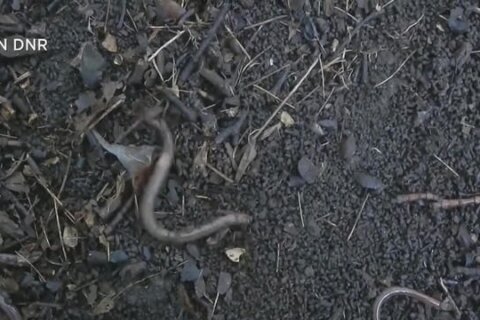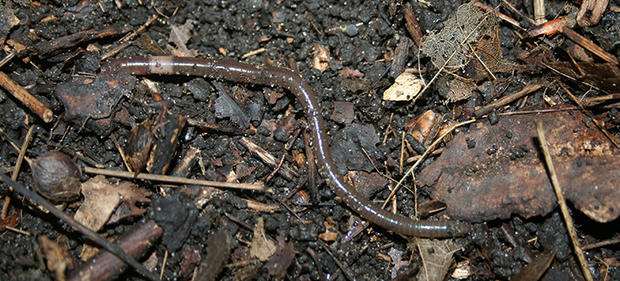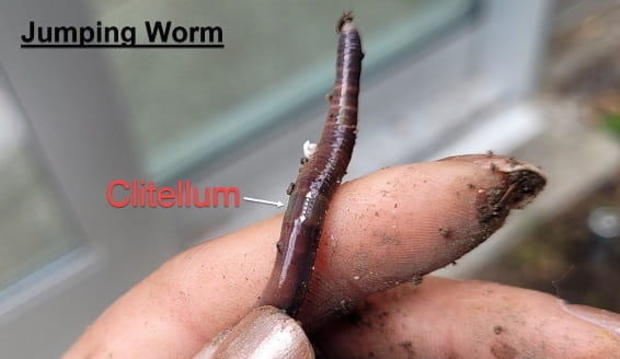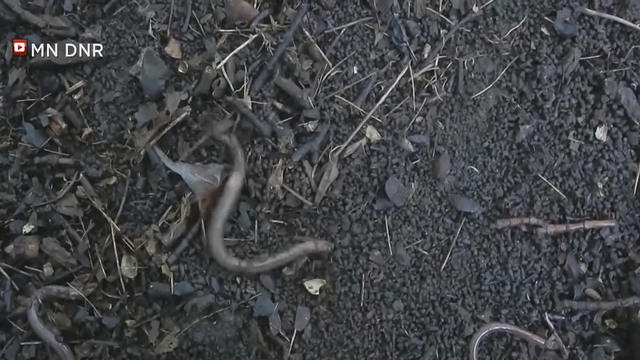
▶ Watch Video: Invasive jumping worms found in at least 34 states
As you tend to your garden this summer, there’s a creepy, crawly creature to be on the lookout for: an invasive worm that moves like a snake, thrashes around, jumps into the air and will even shed its tail in an attempt to escape.
While worms are generally considered to be an excellent addition to help soil and gardening, there are thousands of species — not all of them equally welcome. Invasive jumping worms are one species known to actually worsen soil and make it “inhospitable” to many plants. They have been spotted in recent years, and most recently, may have even been seen in Wisconsin.
Here’s what to know about the invasive species.
What are invasive jumping worms?
Invasive jumping worms, Amynthas agrestis, go by many names, according to the USDA: Alabama jumpers, Jersey wriggles, wood eel, crazy worms, snake worms and crazy snake worms. But all those names stem from one notable feature of the critter.
“Invasive Asian jumping worms got their name because of the way they thrash around,” Forest Service researcher Mac Callaham said in a post by the USDA last year. “They can flip themselves a foot off the ground.”
The worms are thought to have first made it to the U.S. some time in the early to mid 1900s from eastern Asia, and can be transported to new areas in shipments of mulch or potted plants.
 The invasive jumping worm has popped up across the U.S. in summer months after they reach maturity.
The invasive jumping worm has popped up across the U.S. in summer months after they reach maturity.
DNR
Where are they found?
The critters, which been described as “earthworms on steroids,” had infiltrated Connecticut and more than 30 other states as of last summer. According to the Connecticut Agricultural Experiment Station, the worms are often found in the eastern U.S. and parts of Canada, where the climate is “similar to the area in Japan where jumping worms come from.”
“Jumping worms are well adapted to these humid continental and humid subtropical climates, and so they have a strong potential to invade the entire eastern half of the United States and parts of Canada,” the department says.
And most recently, they may have been found in Wisconsin.
Wisconsin officials said the Door County Invasive Species Team received a report from a local resident that there may be jumping worms in a mulch pile at Sturgeon Bay’s compost site. The city, which issued a statement on July 6, said it is investigating the report and that the site will be treated “as if it is infested” until it is proved otherwise.
The Wisconsin Department of Natural Resources says the worms typically live within the top inch or two of the soil’s surface, often in debris and leaves, and can be found in yards, gardens, mulch, compost and potted plants. They spend the summer months eating and growing and are most noticeable in the late summer and early autumn once they reach maturity and start to reproduce — which they can do without mates.
Why are jumping worms bad?
Wisconsin officials explain that the worms eat the organic matter in soil and leave behind waste that looks like “hard little pellets,” known as castings, that “alter the texture and composition of soil” to make it look like large coffee grounds. That soil lacks the structure and support necessary for many native plants to survive.
The worms are also known to have build-ups of toxic metals within their systems, including mercury, cadmium, copper and lead, according to the Connecticut Agricultural Experiment Station. If those metals, which are found in soil, reach high levels within the worms, it can “negatively impact” the birds that may feed on them, researchers said.
What do invasive jumping worms look like?
The Wisconsin Department of Natural Resources describes invasive jumping worms as having a “smooth, glossy dark gray/brown color” with a cloudy-white to gray-colored band, known as the clitellum. The worms are known to have a “snake-like movement,” are often found in large numbers, and will “thrash, spring into the air and can even shed their tails to escape,” when they are disturbed, the department says.
 Invasive jumping worms often have a gray or milky white clitellum band that’s flat against the rest of their bodies.
Invasive jumping worms often have a gray or milky white clitellum band that’s flat against the rest of their bodies.
Shikha Singh, JLW CISMA/Michigan Invasive Species Program
How can you prevent and get rid of invasive jumping worms?
There are not yet any official methods to help control or prevent jumping worms, but Wisconsin officials say the best thing people can do is to educate themselves about how to recognize the creatures. People are also encouraged to clean soil and debris if moving it between areas, and only sell or purchase plants and gardening materials inspected and believed to be jumping worm-free.
If jumping worms are found, remove and destroy them by sealing them in a bag and throwing that bag in the trash, Wisconsin officials say. They also said research has shown that the worms and their cocoons can’t live through temperatures of 104 degrees Fahrenheit or above for more than three days — a temperature that can be easily hit in compost piles or can be reached by putting clear plastic over garden topsoil exposed to the sun.








